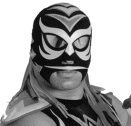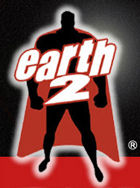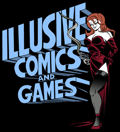The Supercard is a big deal, or at least
it was. There have been Supercards in wrestling dating back
to the early 1900s, but the concept was really defined in
the 1970s, perfected in the 1980s and muddied-up in the
1990s. Today, there’s really only one Supercard a
year, but it wasn’t always like this.
A Supercard is simple: it’s a huge
show that is promoted as more important than any other show
that the company is likely to present any time soon. It’s
not just a big card, but a REALLY big card.
There were cards like that in the 1930s,
when all the major stars from across the country would come
to shows with the World Heavyweight Champion in the Main
Event. There was a big one in 1937 at Wrigley Field.
The modern Supercard might go back as far
as 1967 with the Cow Palace Battle Royals. They would bring
in not only all the stars from the San Francisco Territory,
but guys like Andre the Giant, Rocky Johnson, Jimmy Snuka
and more. They would fill out the Battle Royal and they
would drew big houses for them.
Japan had a few Supercard-like things in
the 1970s, one even featuring Antonio Inoki and Giant Baba,
far bigger rivals than McMahon and Bischoff ever were, in
a tag team Main Event. Fritz Von Erich also promoted cards
at various Texas stadiums in the late 1960s and through
the 70s, though they never got much attention nation-wide.
The WWWF did three shows called Showdown
at Shea. These were huge shows held at Shea Stadium in New
York. The first one was held in 1972 with Pedro Morales
giving a match to Bruno Sanmartino. Folks thought that this
was where Bruno would win back his title, but instead they
went to a draw in 65 minutes. There were other huge matches,
Gorilla Monsoon vs. Ernie Big Cat Ladd for example, and
it was certainly a bigger card than the WWWF, or any other
major promotion up to that point, had pulled off.
They did it again in 1976. They were showing
Inoki vs. Muhammad Ali via Closed Circuit TV, but that wasn’t
drawing. It was lucky that Bruno Sanmartino got his neck
broken by Stan Hansen because that drew 32,000 as the real
main event. Chuck Wepner also wrestled Andre the Giant.
The 1980 show drew 36k and was headlined
by Larry Lbysko losing to Bruno in a steel cage match that
was very good. This was the one that really looked like
the cards that would be promoted over the next decade as
they brought in gusy from Japan (Tatsumi Fujinami, Inoki)
and many other smaller territories like Puerto Rico and
the Southern California territory run by Judo Gene Labell.
About the same time as the WWF stuff was
going strong, Championship Wrestling from Florida was starting
to hold Supercards. The Superbowl of Wrestling was held
January 25th, 1978 at the Orange Bowl. The show brought
folks from all over the NWA, including a bunch of WWWF guys
like Morales, Ken Patera and Ivan Koloff. The main event
was WWWF Champ Superstar Billy Graham going to a draw with
NWA Heavyweight Champ Handsome Harley Race. Just a month
later, in Jacksonville, New WWWF Champ Bob Backlund and
Race went to a 60 minute Broadway on a show that was big,
but not nearly as big as the one a month earlier. They did
it again in October with the same result, but drawing less.
In 1980, they had the Last Tangle in Tampa
which was a huge show. They brought in Andre the Giant,
had Backlund defend his WWWF belt against Don Muraco and
had Harley Race headline against Dusty Rhodes during the
chase that would eventually get Rhodes the title. In 1984,
The Lords of the Ring at the Orange Bowl card seemed less
spectacular due to the non-appearance of any WWF guys and
the fact that Starrcade had been such a big deal 7 months
before. The show still drew 20,000 for Flair vs. Rhodes.
The Battle of the Belts in 1985, after the first WrestleMania,
drew less than 10,000 for a Wahoo McDaniel vs. Ric Flair
main event and AWA stars including the Road Warriors on
top.
World Class Championship Wrestling was an
innovator in a lot of ways, and one of them was the way
they promoted big cards. In 1981, WCCW put on the first
Christmas Star Wars card. On Christmas Day, they drew a
big house for Fritz Von Erich vs. The Great Kabuki in a
Texas Death Match. The rest of the show was stacked with
Von Erichs and even the Blue Demon and El Solitario from
Mexico.
The show was nowhere near as memorable as
the second Christmas Star Wars in 1982. That was the show
that I’ve written about where Ric Flair beat Kerry
Von Erich and the Freebird Feud was born. The following
year they did a July Fourth and Labor Day Star Wars shows
at the Fort Worth Convention Center, drawing sell-outs both
times.
Starrcade ‘83 in many ways was what
led to WrestleMania. On Thanksgiving Night in Greensborough,
Jim Crockett Promotions put on the biggest show that the
NWA had put on together in ages without the help of any
of the ‘New York’ guys who worked for Vince.
They brought in people from the Carolinas, Mid-Atlantic,
Florida and Puerto Rico. Abdullah the Butcher and Carlos
Colon had a match on the card, which may be one of maybe
10 they wrestled in the US despite the fact that they’ve
faced each other more than a thousand times. There was the
famous Roddy Piper vs. Greg Valentine Dog Collar match that
I’ve written about so often. There was Tully Blanchard
vs. Ricky Steamboat for the TV Title (which is a match you
don’t hear much about but was very good) and the Main
Event: A Flair for the Gold with Ric Flair winning back
the NWA Heavyweight Title from Harley Race in a Cage match.
It really did define the Supercard for the
1980s. It brought in folks from around the NWA and they
did huge numbers, something like 40,000, at various closed
circuit sites. That’s big money, about three months
of regular business in one night, if not more.
In 1984, the Supercard was in full force.
WCCW was at it again with the Parade of Champions in honor
of David Von Erich. Flair lost the NWA Title to Kerry Von
Erich and the thirty-two thousand people. The show was stacked
from top to bottom and the pop for Kerry winning was amazing.
They followed that with Independence, Labor Day, Thanksgiving
and Christmas Star Wars cards that drew big too, as well
as a huge Cotton Bowl card in October. That first one drew
12,000, but they’d planted the seed for bigger shows.






